
[ad_1]
Whenever Intel, AMD, or Qualcomm launch a chip, the first question anyone asks is, how fast is it? We won’t know how Intel’s Tiger Lake performs until we test it ourselves. But Intel certainly believes its 11th-gen Core chips are much faster than AMD’s mobile Ryzen 4000 parts—because it made claim after claim to that effect.
Intel talked aggressively about Tiger Lake’s performance early on, but the comparisons that accompanied the formal launch of the Tiger Lake family Wednesday were, well, sort of wishy-washy. It wasn’t until later in the day, during deeper-dive press briefings, that Intel began hammering home Tiger Lake’s performance compared to AMD’s mobile Ryzen.
Let’s be clear: These are Intel’s claims, using its own microprocessors, laptops, and benchmarks. Are they objective? No. We’ve already seen crazy-cheap notebooks like the mobile AMD Ryzen-powered HP Envy x360 13 perform exceptionally well for their price and weight. Intel has a big stake in reclaiming its dominance in notebook PCs—even though AMD’s mobile Ryzen 4000 is now about nine months old.
We asked for AMD for comment on Intel’s claims, but we didn’t hear back by press time.
A baker’s dozen of Tiger Lake claims
Intel’s Tiger Lake testing showcases a lot of shiny new technology: the “Willow Cove” 10nm CPU architecture, the integrated “Xe” GPU, plus new features like the Gaussian Neural Accelerator 2.0, PCI Express Gen 4, and Thunderbolt 4, among others. All of these factors may help Intel in benchmarks. Most of these tests use the Intel chips’ Adaptix Dynamic Tuning to squeeze out maximum performance, for instance, while the comparative AMD mobile Ryzen chips are set to “Extreme Performance Mode.”
Intel’s summary of its “real-world performance” results (below) cherry-picks tasks and compares them to the AMD Ryzen 4800U in laptops like the superb Lenovo IdeaPad Slim 7. Do we need a better laptop to convert PDFs? Maybe not, though photo upscaling, gameplay, and file transfers are useful.
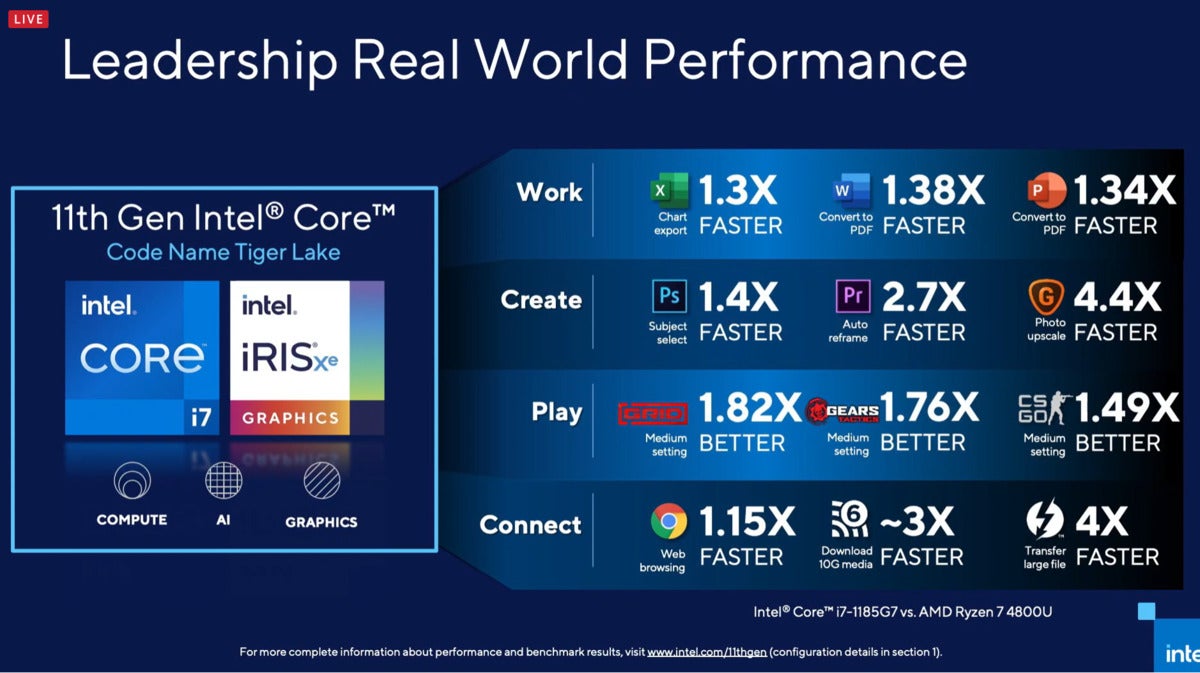 Intel
IntelIn the slide below, Intel compares Tiger Lake to 10th-gen Ice Lake chips as well as the mobile Ryzen 4000 competition. Is 40 percent faster performance in Office worth buying? Maybe not, but when you start to drill down, a 57-percent performance improvement in Excel may convert a Ryzen buyer–and the improvement over Ice Lake could inspire an upgrade as well. Sysmark benchmarks, however, are more suspect, given accusations of cheating in the past.
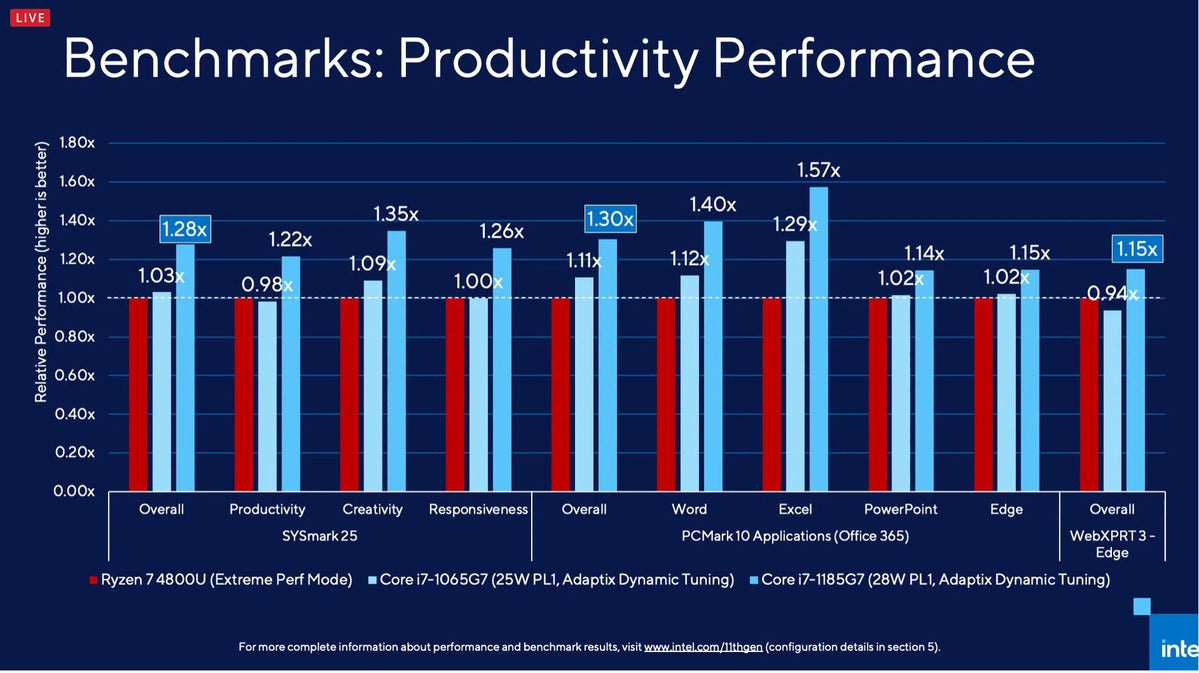 Intel
IntelWhile a number of productivity tasks stress the CPU almost exclusively, content creation leans more heavily into GPU utilization. In the slide below, Intel is providing an overview of how it fares in the abstract Sysmark test (measuring productivity), but also real-world tasks like Adobe Lightroom and Photoshop. It’s possible that buyers won’t see that much value in how Lightroom smooths skin textures, but a 2X improvement over Ryzen in video export is pretty impressive, as long as there’s no hanky-panky going on behind the scenes to inflate the numbers.
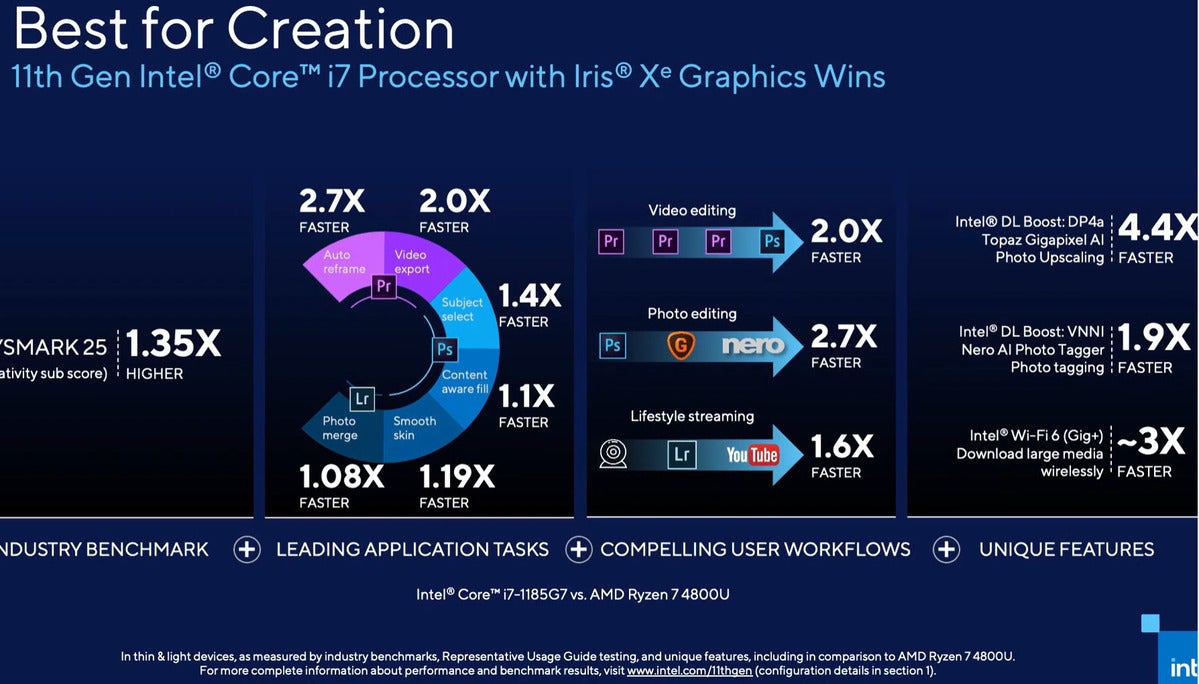 Intel
IntelIntel’s also pretty proud of its AI capabilities, specific to the Gaussian Neural Accelerator 2.0 logic block within Tiger Lake. AMD hasn’t emphasized Ai, either. (AI accelerates apps like Amazon’s Alexa, it’s more often used for filtering, whether in creative apps like Photoshop or in getting rid of background noise.)
“Last year we were kind of at the cusp,” said Roger Chandler, vice president of Intel Architecture, graphics and software, and general manager of client XPU products and solutions. “This year we’re really seeing the breakthroughs for the developers, so AI can take the edge of the technology, and the user can focus on what they want to do.”
Intel used Topaz Labs and its Gigapixel Upscaler app to produce the results below. The app uses AI to add detail to photos, upscaling them to higher resolutions.
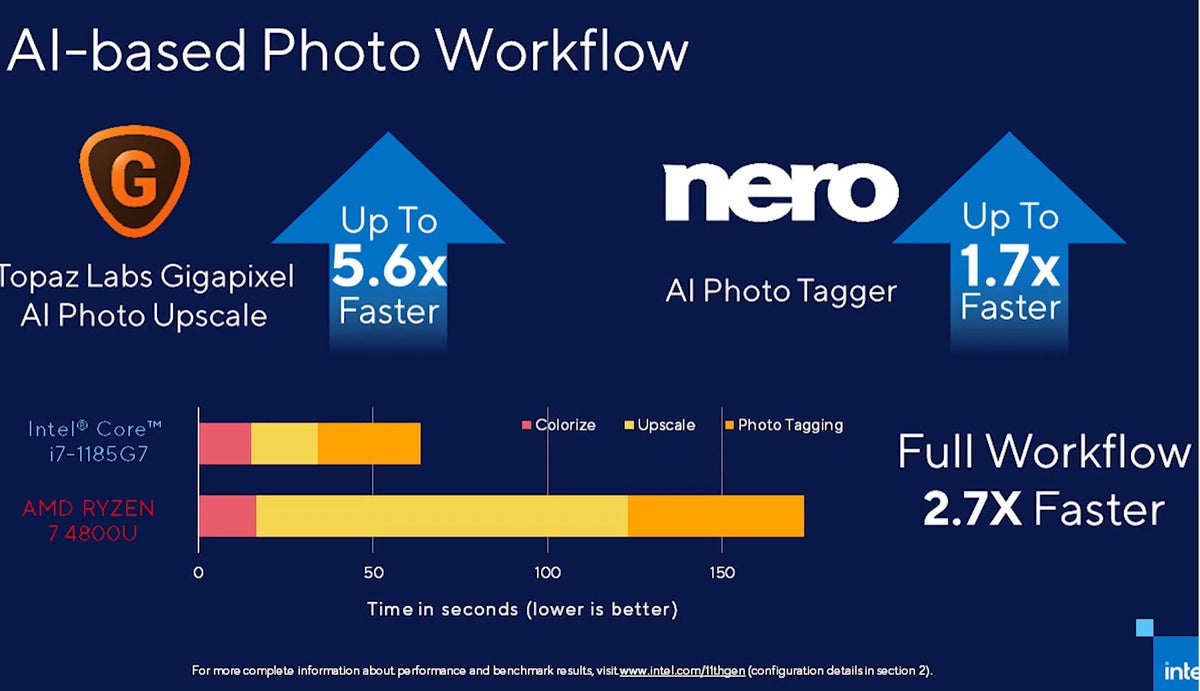 Intel
IntelThe next three slides focus more heavily on what you might call “pure” AI, which is much more academic. Given Intel’s investment in AI (and a 4X improvement over Ryzen, shown below), Intel’s isn’t shying away from this segment of the market, either.
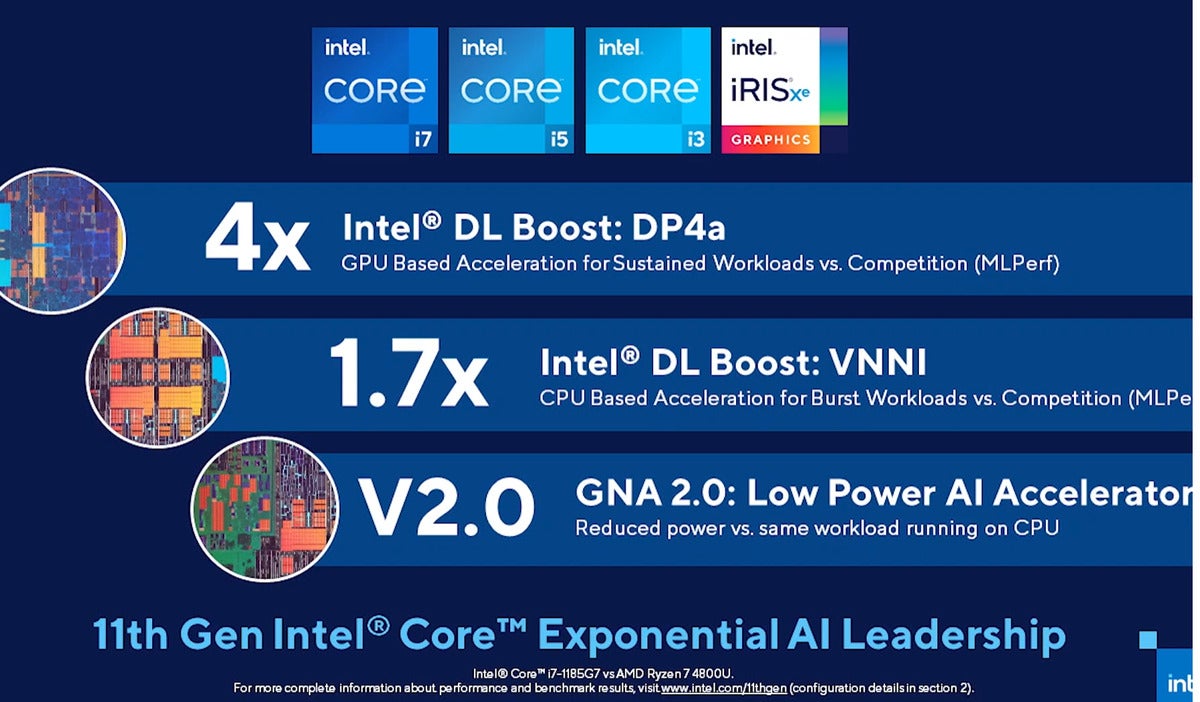 Intel
Intel
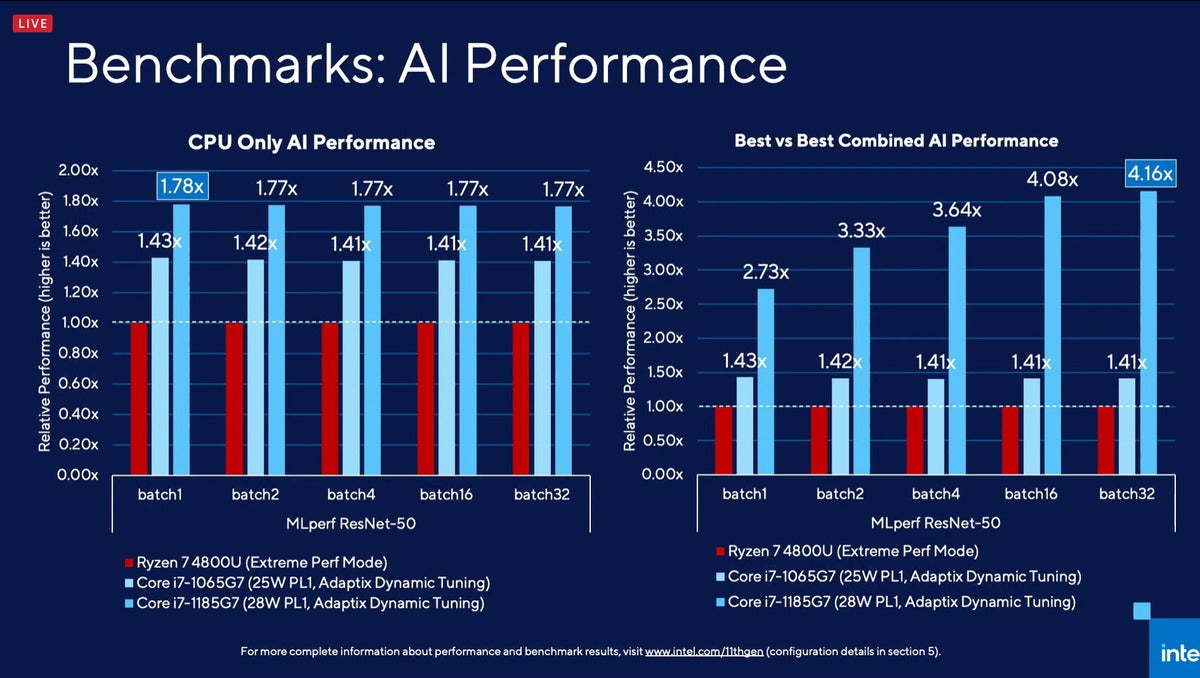 Intel
Intel Intel
Intel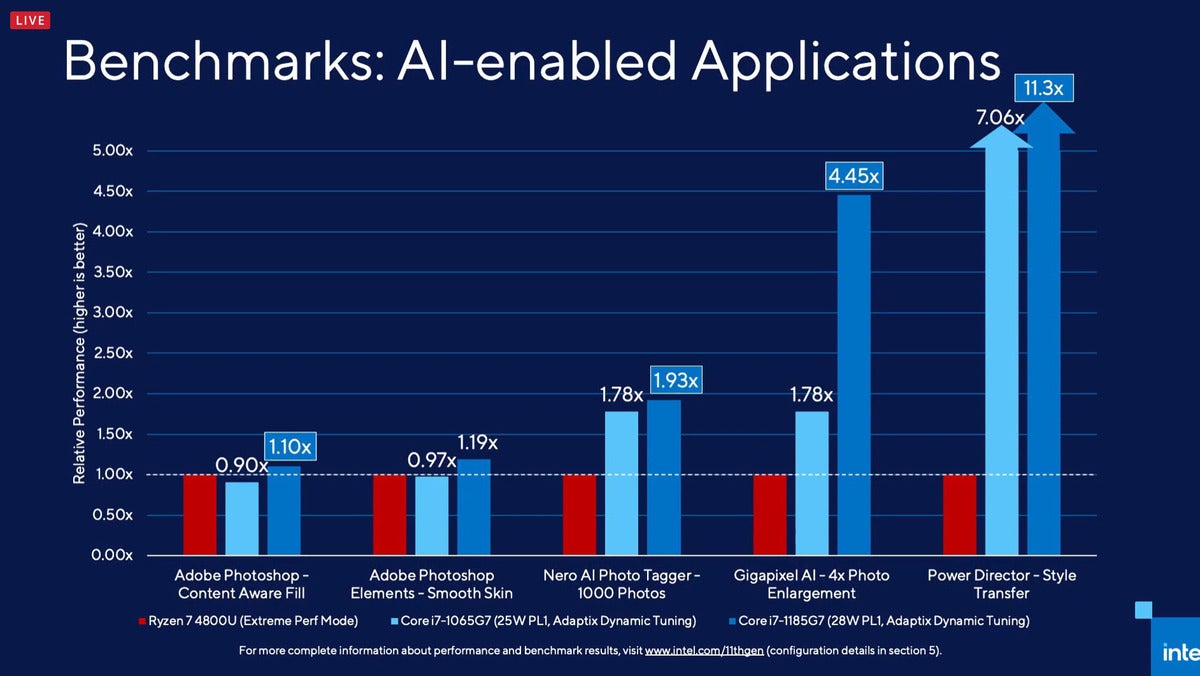 Intel
IntelHow does Intel fare in gaming? Intel happily showed off the capabilities of the new Xe GPU. For years, AMD’s integration with Radeon gave the chipmaker a leg up in integrated GPUs, even if the CPU portion of the die lagged a bit. Naturally, AMD has a discrete GPU division to fall back upon, while Intel’s own Xe HPG chips for gamers will have to wait until 2021.
Intel undaunted, offered plenty of performance comparisons in laptop gaming, such as those below. Again, we can’t vouch for these.
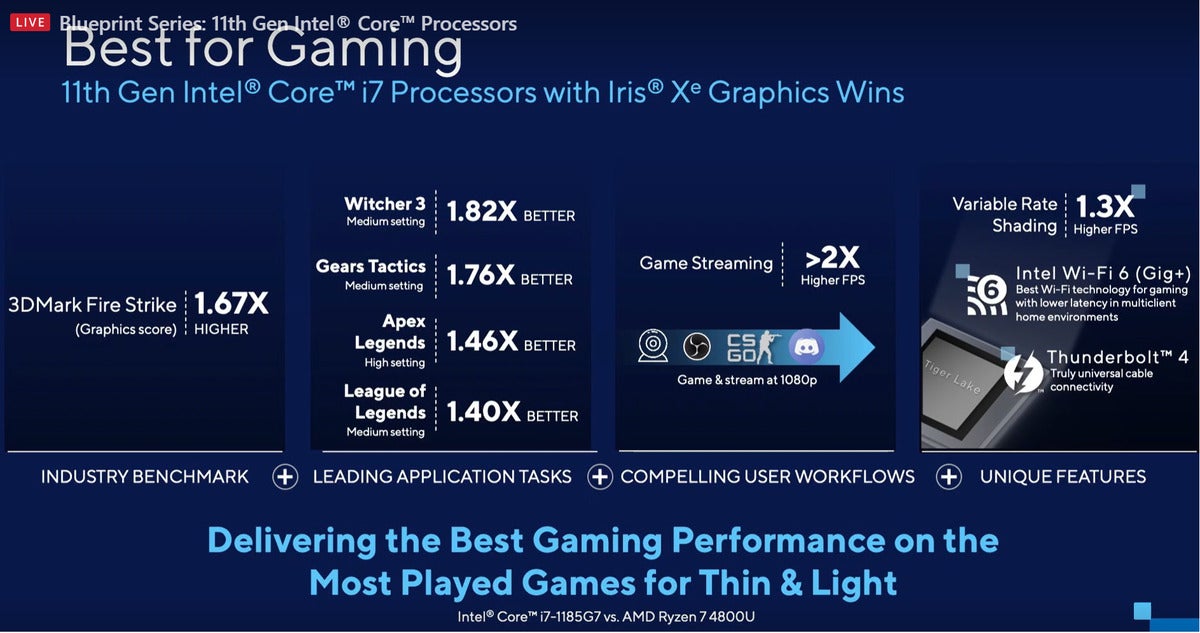 Intel
IntelIntel also provided a list of games (below) that it believed would be “playable” at acceptable framerates on the Xe GPU within Tiger Lake. A smooth 60 frames per second is what most gamers consider acceptable, but games like The Witcher 3 should be playable at 50 fps. Unfortunately, there’s no indication of what quality settings were used, a critical element that was left out.
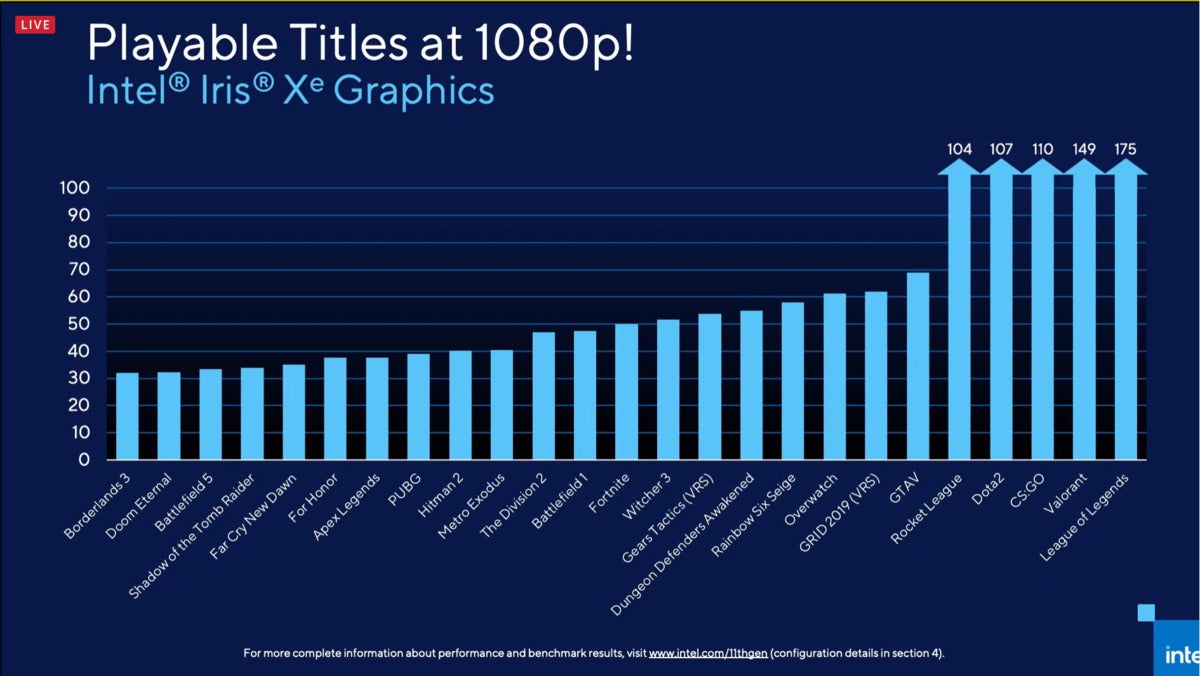 Intel
IntelOne of the selling points of the Xe GPU was its 2X gen-over-gen improvements over the 10th-gen integrated Ice Lake GPU. Intel was happy to spell those out (below) for reporters, too. There weren’t any raw numbers to work from (nor graphics settings), unfortunately.
 Intel
IntelIf we assume that Intel is playing fair in the next slide (below), then it’s claiming an advantage over Ryzen in these games. Keep in mind that some games simply run better on Intel silicon, because of developer optimizations. But these are Intel’s claims.
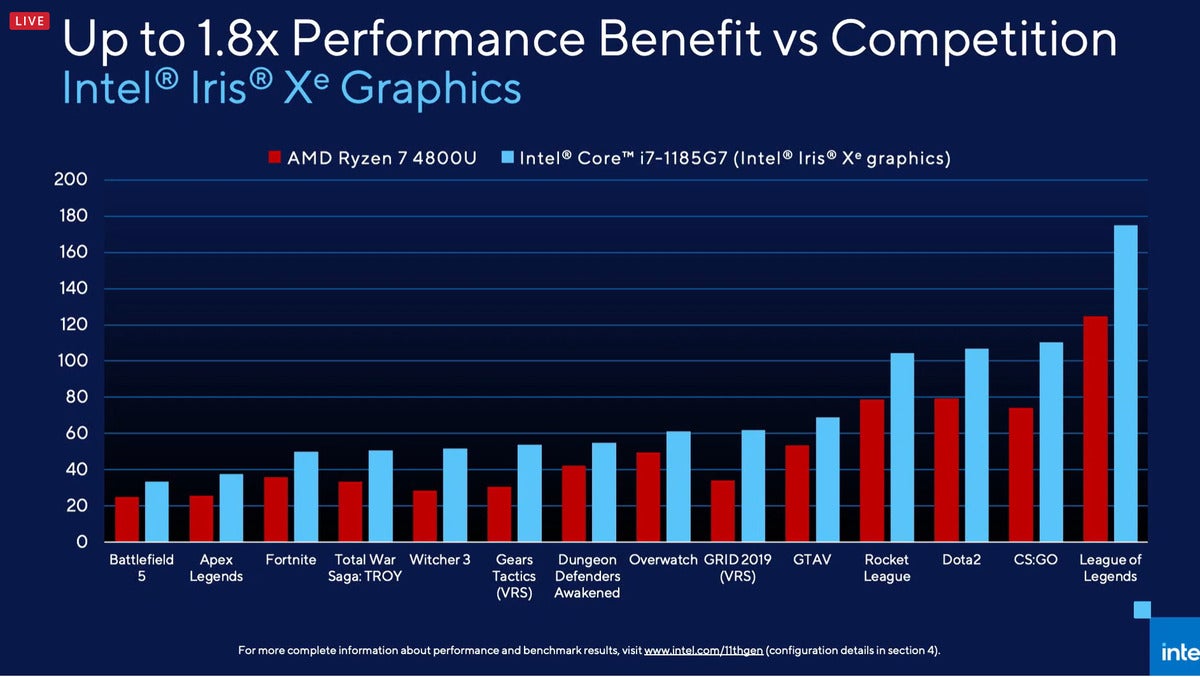 Intel
IntelIntel also whipped through a few representative gameplay examples to provide finer detail. The RTS game Total War Saga: Troy appears to run substantially better on Tiger Lake than it does on Ryzen—according to Intel, anyway.
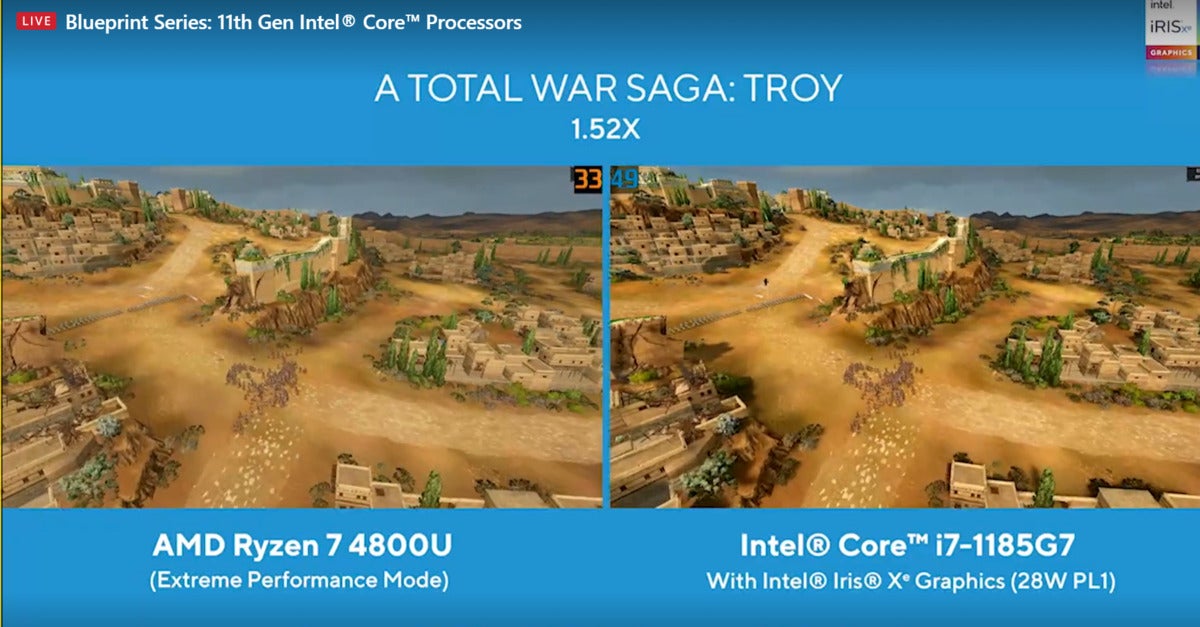 Intel
IntelFinally (below), Intel benchmarked Tiger Lake and Ryzen while gaming and streaming—which has become a more common activity, though it usually requires a desktop. Intel seems to believe that it’s possible with a Tiger Lake laptop, as long as you’re streaming a relatively ancient game like CS:GO.
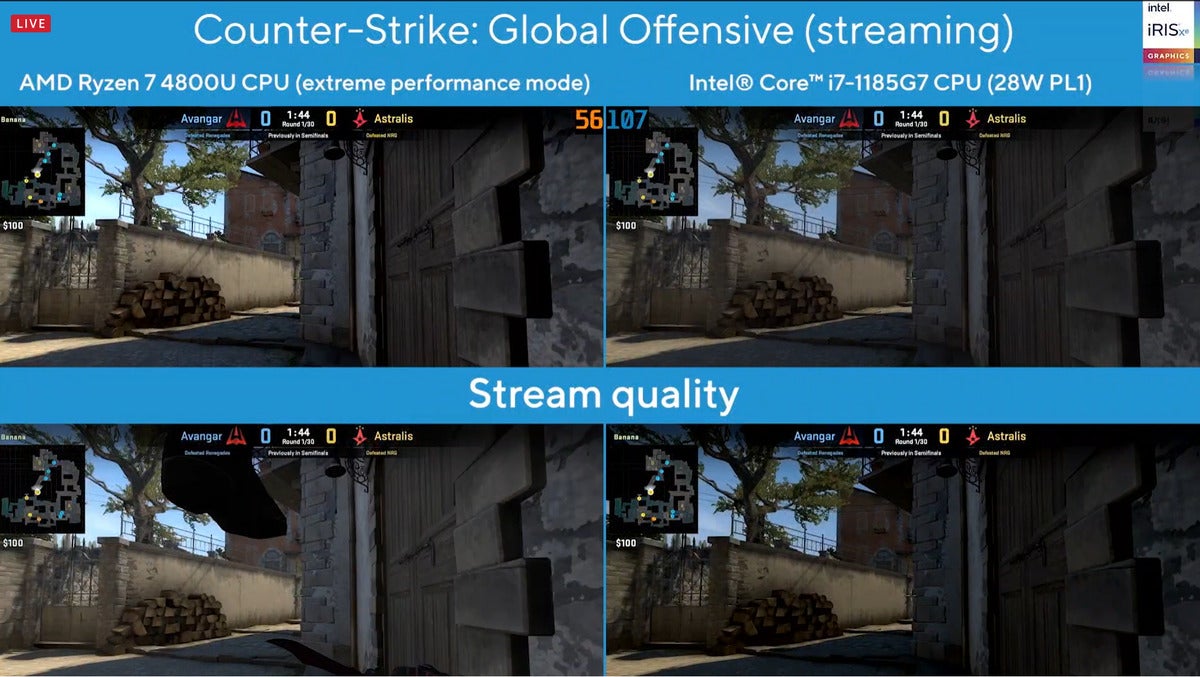 Intel
IntelWould you believe that there were actually more performance benchmarks that Intel came up with that we haven’t included?
In law, there’s a saying: “If the facts are for you, pound the facts. If the law is in your favor, pound the law. And if neither is the case, pound the table.” In this case, the message that Intel’s trying to convey is that it believes benchmarks—whatever they may be—are in its favor. You can find the basis for Intel’s claims—in exhaustive text form—at its 11th-gen mobile Core site.
Intel’s Tiger Lake is already in the sampling phase, where early chips go out to PC vendors for testing. Intel isn’t saying exactly when notebooks with Tiger Lake chips inside them will ship. With what Intel says are 150 designs in the works, however, we’re pretty sure we’ll have a chance to test at least some of Intel’s claims before too long…maybe in an Evo PC.
Related Intel Tiger Lake stories:
[ad_2]
Source link